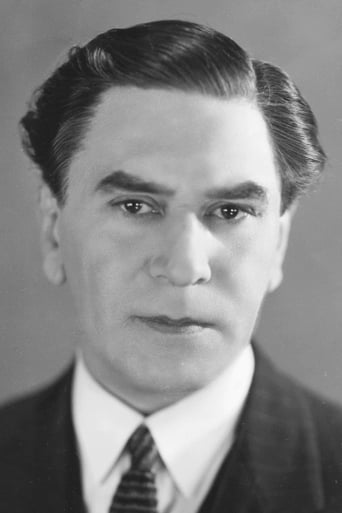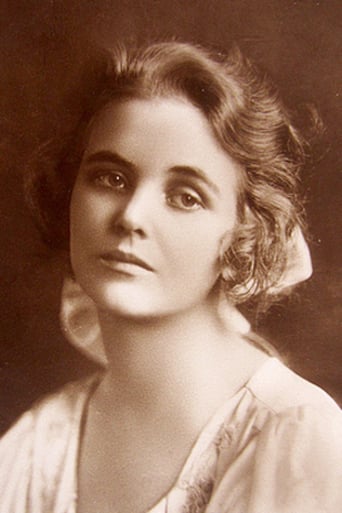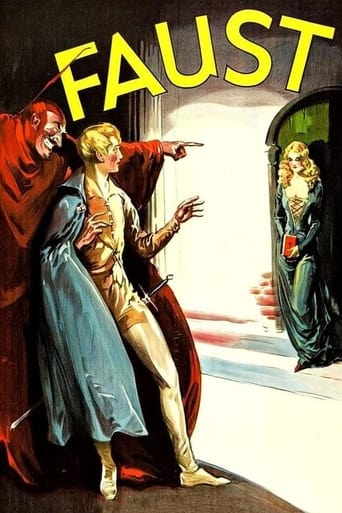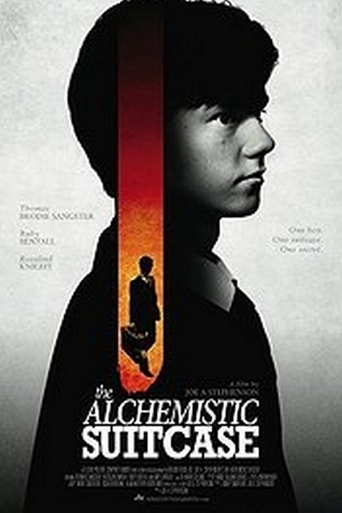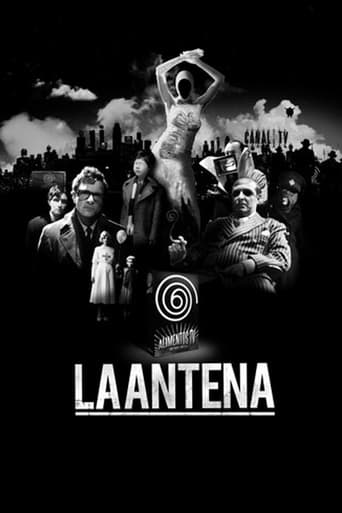
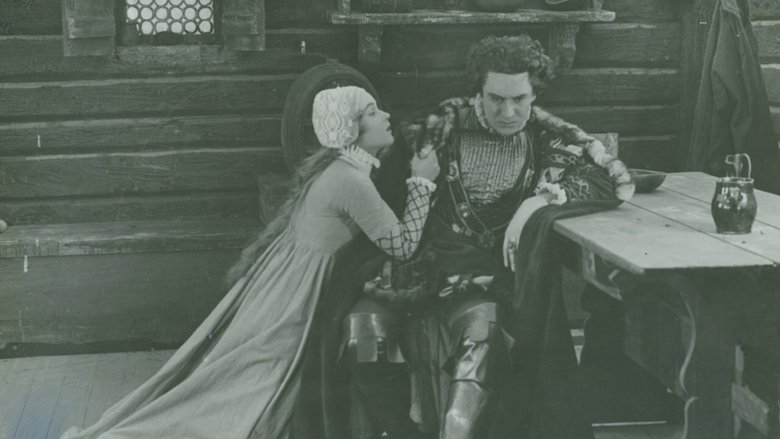
Sir Arne's Treasure (1919)
Three Scottish officers, including Sir Archi, murder Sir Arne and his household for a coffin filled with gold. The only survivor is Elsalill, who moves to relatives in Marstrand. There she meets a charming young officer- Sir Archi- and she soon understands that he was one of the murderers.
Watch Trailer
Cast


Similar titles
Reviews
I'll tell you why so serious
Good story, Not enough for a whole film
There are better movies of two hours length. I loved the actress'performance.
Watching it is like watching the spectacle of a class clown at their best: you laugh at their jokes, instigate their defiance, and "ooooh" when they get in trouble.
During the final climactic moments of "Sir Arne's Treasure", Sir Archie is asked why he committed his atrocious crimes; in addition to the requisite alcohol, he blames his actions on cold and hunger. This scene isn't so much an admission of pertinent character motivation as it is of the elements as the driving force of the film. Nature in Scandinavia can be unforgiving. That fact is captivatingly related in five of the earliest Swedish films widely available today: Victor Sjöström's "Terje Vigen" (1917) and "The Outlaw and His Wife" (Berg-Ejvind och hans hustru)(1918), two of Mauritz Stiller's adaptations of Selma Lagerlöf novels, "The Saga of Gosta Berling" (Gösta Berlings saga)(1924) and this film, "Sir Arne's Treasure", as well as an Arte Edition of Stiller's "Johan" (1921). "Sir Arne's Treasure" is probably the best developed of this small sampling of a characteristic type of national cinema. Of course, Stiller and Sjöström made other kinds of films, as well, although too few are widely accessible on DVD. Films, such as the behind-the-scenes comedy "Thomas Graal's Best Film" (1917) and its follow-up "Thomas Graal's Best Child" (1918), both directed by Stiller and starring Sjöström, or the early feature "The Gardener" (Trädgårdsmästaren)(1912) directed by Sjöström and penned by Stiller, to name a few examples, have long been praised and have appeared at screenings here and there, but remain largely inaccessible.In "Sir Arne's Treasure", the elements entrap the characters. Literally, the frozen sea locks a ship. As fellow IMDb reviewer Tedg said, these memorable scenes are reminiscent of Shackleton's Antarctic adventure—which, by the way, was made into a documentary film, also in 1919, "South". The murderous thieves are prevented from leaving by the frozen sea, and in their earlier, immediate, escape are almost thwarted by sinking through breaking ice. Moreover, bad weather and circumstances are attributed to fate and God. The ship's crew believes they're stuck because of the wrongs of the three men. Characters have premonitions and dreams, alerting them, although not preventing them from, future disasters. Guilt anticipates visions and flashbacks. Bad weather and fate directly and indirectly affect the tragic love between the lead characters.These forces of nature are well supported by some beautiful photography and technical expertise by Stiller and his crew. There's some advanced use of a mobile camera for 1919, mostly to follow characters. When the film begins rather comically, with the three prisoners being jocular, a tracking shot of a prison guard walking through the corridor and its shadows nicely foreshadows the serious and gloomy turn the rest of the drama will take. There's also an eerie, steady tracking shot of Sir Archie travelling across the frozen sea while being haunted by the superimposed image of one of his victims. This scene is followed by more arresting images, as Elsalill is led in a foreboding dream by her dead sister. The film features impressive photography and lighting of the natural landscape, the ice and rugged terrain, as well as scenes of falling snow. The mourning procession, allowing the frozen sea to breakup behind them, is quite touching. Additionally, the editing overall is rather well done, including point-of-views and eyeline matches, cutting on action and scene dissection, dissolves, iris fades, etc. The only parts noticeably primitive were some of the staging/blocking of the actors, with poor medium-shot camera placements when character groupings were the main point of interest in a shot, but, at other times, the filmmakers overcame this obstacle, and when they didn't, it's not terribly distracting. Also, among the acting, Mary Johnson stands out as Elsalill. She is more natural and restrained than the other performers and is especially more affecting; her torment is clear just by her standing.The Swedish Film Institute did a fine job with the restoration of this film. The recreated tints significantly aid Julius Jaenzon's cinematography: amber tinting to the flicker and glow of scenes near fireplaces, red tinting for the fire sequence, blues for the snowy outdoor scenery and night scenes. There are a few odd red artifacts, which I'm not sure may have been a product of restoration or the ageing of the print source; this includes some brief red scratches and during the supper scene, the curate's soup in his spoon becomes colored red. Additionally, the score can be a bit distracting early on, although I think it improves by the end, and I appreciate the sound effects. Overall, a fine restoration and quality print source. It'd be great if the Swedish Film Institute continues such fine work and, perhaps, could emulate the Danish Film Institute's practice of restoring more 1910s and early 20s titles for DVD. After all, this period of Swedish cinema is unique and impressive. The depressing nature of the drama of "Sir Arne's Treasure" only seems matched from this period by Russian filmmakers of the 1910s like Bauer and Protazanov, but their films and characters' guilt are more psychologically and societally driven; whereas, Sjöström and Stiller were among the first in film to make their characters' misfortunes and misery products of a harsh fate and nature.
As far as I can tell, this is the first Swedish Silent that I've watched (I'd previously been intrigued by a solitary still actually used for the DVD sleeve itself found in "The Movie", a British periodical from the early 1980s); I've seen a handful of early efforts from neighboring Denmark and the aesthetic starkness in the predominant style of both countries is pretty similar. It's also the first from Swedish master Stiller (I also own his two other well-known titles, EROTIKON [1920] and THE SAGA OF GOSTA BERLING [1924], that were released on DVD from Kino and I may very well include the latter in my current Epic/Historical films schedule); incidentally, I've only checked out and was duly impressed by two American-made pictures from Victor Sjostrom, the other great director to emanate from this country during the Silent era.SIR ARNE'S TREASURE is best described as a historical melodrama since the elements typically expected of an epic only really come into play in the scenes involving a fire early on and a sword-fight towards the end. However, one shouldn't overlook the vast and forbidding icy landscape which not only serves as an extremely realistic backdrop to the narrative incidentally, the quality of the cinematography throughout likens the film to an uninterrupted series of medieval tableaux but is very much another character in it, since the villains' flight (the perpetrators of a massacre in a household, from which they also abscond with the titular fortune) is prohibited because the sea has frozen over! Notable scenes here include: a cart-wheeling horse falling head-first through cracked ice; the youngest of the thieves having ghostly visions of one of his murdered victims (as it happens, he later falls for the girl's sister and she with him, which leads to the latter being torn whether to give her lover away or run off with him to Scotland!); the leading man ultimately using the heroine as a human shield against the oncoming soldiers; the closing procession over the ice by the townsfolk to reclaim the girl's dead body (justly considered one of the visual highlights in all of Silent cinema).The plot also effectively incorporates the element of premonition such as when the fish-hawker's usually docile canine companion senses impending doom and starts to howl, Sir Arne's wife literally hearing from miles away the preparations for the subsequent assault on her abode, the ship captain's tale of a previous case of poetic justice similarly brought on by severe weather conditions, and the heroine being led by her dead sister to the villains' whereabouts in a dream. The print I watched featured nice use of blue (for outdoor night-time scenes) and red (the afore-mentioned blaze) tinting; the newly-composed accompanying score is appropriately sweeping, albeit making use of mostly modern instruments. The main extras on the Kino DVD involve noted film historian Peter Cowie, who supplies an informative background to early Swedish cinema (where he also discusses the seminal contribution of authoress Selma Lagerlof who was behind the source novel of both this and THE SAGA OF GOSTA BERLING) and, in a separate featurette, focuses exclusively on the film at hand.
Very unusual and extremely well done film set during a bitterly cold winter in 16th century Sweden, where three Scottish soldiers of fortune, arrested and imprisoned in "the tower", escape and then hide their identities by wearing hides (and Santa Claus hats) as they pretend to be journeyman tanners roaming the countryside looking for work. But soon these three have committed a horrific crime - murdering an entire household, they steal the treasure chest of Sir Arne, town vicar, rumored to be filled to the brim with silver coins. The only survivor of this terrible bloodbath is an innocent young maiden named Elsalill, who is taken to live with a fish hawker and his wife. But soon she meets one of the men (the youngest and most handsome, of course) who was involved in the crime and begins to have a relationship with him, not knowing who he is - and both are soon haunted by dreams and nightmares of the crime.This film is gripping, haunting, and beautifully photographed, the outdoor scenes in the ice and snow looking just like stark and gloomy picture postcards. Especially memorable in my mind is the scene of Elsalill's dream with the ghost image of her young foster sister who was murdered sort of floating along near her as she walks. The DVD of this features an amazing looking print, brightly tinted in mostly blue and deep sepia perfectly reflecting the bitter cold outdoors and the warmer rooms of the indoor scenes. The music score is excellent as well, and helps set the mood, along with the costuming and period settings, to make this film really feel like a step back to another place and time.
Watching 'Master Arne's Treasure' is, at times, like watching a moving gallery of pictures by Hammershoi, Kroyer or Spilliaert. The film's greatest set-piece has the anti-hero Sir Archie walking at night in a vast snow-scape. The frozen snow seems to be moving like a river away from him; in any case, its stark luminosity in the dark gives it an eerie unstable appearance; against this backdrop, Archie seems unnatural, as if his physical presence doesn't fit properly in his surroundings, like his image has been cut out and pasted ineptly onto a back projection. This prepares us for the ghostly emanation of his conscience, the young girl he brutally murdered for money.'Treasure' is one of the most shocking films of the silent era. This is partly because we are set up to identify with characters who then commit an unspeakable crime. Three Scottish aristocrat mercenaries in Sweden (reversing the Viking pillage in Britain?) are put in a military prison for conspiring against the King. Remarkably, they take this is good spirit, and spend their days in homoerotic bouts of leap-frog. This immediately endears them to the audience - a willingness to play in the most oppressive conditions. Such flippancy certainly antagonises the prison warder, who snarls and pokes his spear in at them: they manage to hold him, steal his keys and escape.'Treasure' begins as Renoir's later masterpiece 'La Grande Illusion' ends - soldiers escape from a foreign prison, tramping through the heavy snow before finding refuge in a wood-cabin. By this time, however, our heroes are starving, and play is replaced by violence as they eat and drink for the first time in months, to the horror of the wife of the house. When her husband comes home, the men are unconscious with wine, and he throws them out.Like the films of colleague Victor Sjostrom, Stiller frames his films in a natural context. But here, nature is more than simply nature, it is an embodiment of a moral order. The film begins with a snow that freezes and paralyses an entire society, and ends with a thawing that cannot take place until the crimes of the malefactors are revealed. They hope to escape to Scotland in a ship surreally stranded in sea-less ice; even when the rest of the ice breaks, it remains stubbornly immovable until the criminals are apprehended.The crime isn't shown, and we are first alerted to it by a vision of Arne's wife, who sees men sharpening their knives. This is a film full of visions (when the crime is eventually shown, it's in a vision), some of them emanations of conscience, others 'Hamlet'-like messages from the grave, revealing the murders. Christian morality plays some part in conjuring up these visions, with Arne's wife's vision a token of guilt, and Arne's treasure, said to have been stolen from monastaries throughout the country, has a negative fetishistic power.The difference between this supernatural realm and the vivid, material evocation of provincial life (dinners, dances, taverns, craftsmen, dogs etc.) is expressed in the strange, haunting imagery. In fact, the two frequently combine, especially at the end, when the death of the orphan produces a funeral cortege, a black worm of mourners slithering on the vast snow, that is both ritualistically 'timeless', strange, yet rooted in local traditions. The film's melodrama - the great suffering of its heroine, the arbitrary intrusion of brutal events, the cynical self-servingly remorseful anti-hero, the almost Kafkaesque proliferation of the military - thus becomes a kind of chilling horror story.


